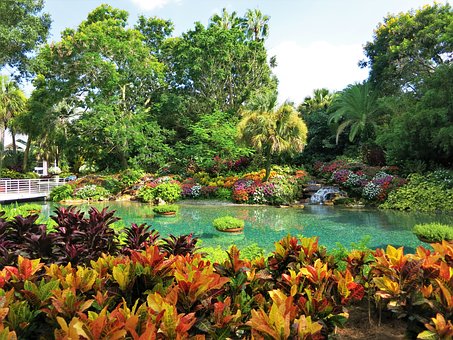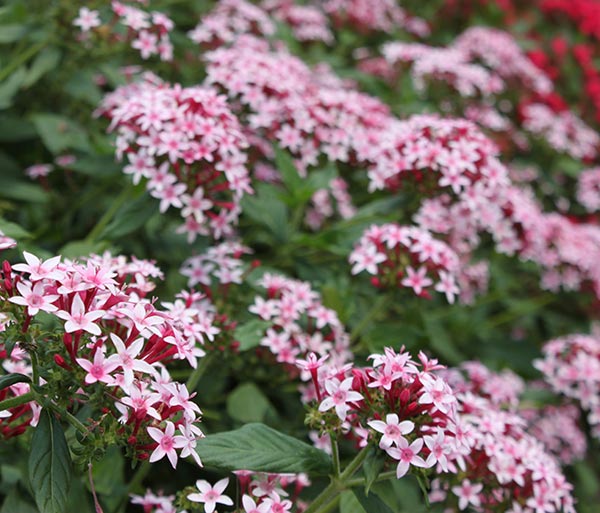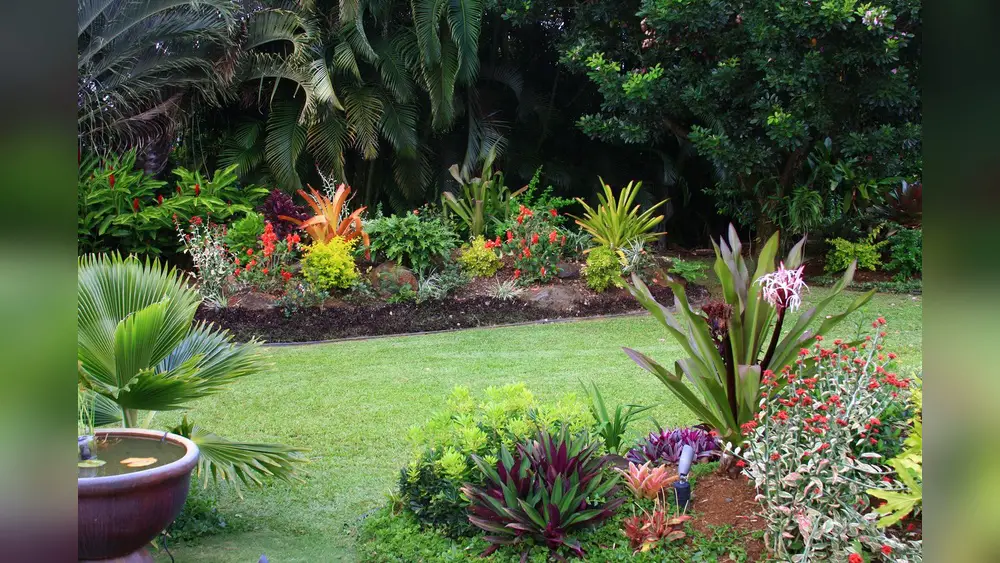Are you ready to transform your outdoor space into a vibrant, thriving garden that thrives under Florida’s unique climate? Choosing the right plants for your garden is key to creating a beautiful, low-maintenance oasis you can enjoy year-round.
Whether you’re a seasoned gardener or just starting out, knowing which plants flourish in Florida’s heat, humidity, and soil conditions will save you time and effort. In this guide, you’ll discover the best plants perfectly suited for Florida gardens—plants that will bring color, life, and resilience to your yard.
Keep reading to unlock expert tips that will help your garden flourish no matter where you live in the Sunshine State!

Credit: www.watsonrealtycorp.com
Florida Climate And Gardening
Gardening in Florida offers unique opportunities and challenges due to its distinct climate. Understanding the climate helps gardeners choose the right plants. Florida’s weather affects plant growth, blooming, and survival. Choosing plants suited to the climate leads to a thriving garden.
Seasonal Weather Patterns
Florida has two main seasons: wet and dry. The wet season runs from May to October. It brings heavy rain and thunderstorms. The dry season lasts from November to April. It features cooler temperatures and less rain. These patterns affect when and what to plant. Gardeners often plant warm-season crops in spring. Cool-season vegetables grow best in fall and winter.
Regional Climate Differences
Florida’s climate varies from north to south. Northern Florida experiences cooler winters than the south. Central Florida has mild winters and hot summers. South Florida stays warm year-round with high humidity. Coastal areas get more sea breezes than inland. These differences influence plant choices and care. Knowing your region helps select suitable plants. Local climate guides are useful for planning gardens.
Heat And Humidity Challenges
Florida’s heat and humidity can stress plants. High temperatures cause water loss and slow growth. Humidity encourages fungal diseases and pests. Some plants thrive despite these conditions. Native plants often handle heat and humidity well. Proper watering and mulching reduce heat stress. Good air circulation helps prevent diseases. Choosing heat-tolerant plants ensures a healthy garden.
Top Vegetables For Florida Gardens
Florida’s climate offers a unique chance to grow a wide range of vegetables. Gardens here can thrive year-round with the right plant choices. Choosing the best vegetables for Florida gardens means considering the seasons and heat tolerance. This guide focuses on top vegetables suited for Florida’s environment. Whether you want cool-season crops, warm-season favorites, or tropical vegetables, this list helps you plan.
Cool-season Crops
Cool-season vegetables grow best in Florida’s mild winters. Lettuce, kale, and carrots do well during this time. These crops prefer cooler temperatures and less humidity. Spinach and radishes also thrive in fall and winter gardens. Plant these crops from late fall to early spring. They add fresh greens to your plate when many other plants slow down.
Warm-season Favorites
Warm-season vegetables love Florida’s spring and early summer heat. Tomatoes, peppers, and beans grow strong in these months. Okra and southern peas handle the heat well too. Plant them after the last frost for best results. These vegetables need full sun and regular watering. They provide fresh produce during Florida’s long warm season.
Tropical Vegetables
Tropical vegetables suit Florida’s hot, humid summers perfectly. Sweet potatoes, cassava, and Malabar spinach thrive in tropical heat. These plants need plenty of sun and moisture. They grow well where other vegetables might struggle. Tropical vegetables add variety and nutrition to your garden. Try these if you want crops that love warmth and humidity.
Best Flowers For Florida Gardens
Florida’s warm climate allows a wide variety of flowers to thrive in gardens. Choosing the best flowers ensures vibrant colors and easy care. Many flowers flourish despite Florida’s heat and humidity. Gardeners enjoy blooms that attract butterflies and bees. Selecting flowers that suit Florida’s environment saves water and effort.
Low-maintenance Choices
Pentas is a top low-maintenance flower for Florida gardens. It blooms continuously with bright red, pink, or white flowers. Blanket flower is another hardy option that tolerates drought. Lantana grows well with little water and attracts pollinators. These plants require minimal care and still brighten any garden space.
Colorful Blooms All Year
Hibiscus offers large, colorful flowers that bloom almost year-round. Bougainvillea adds vibrant purples and reds throughout seasons. Firebush produces fiery orange flowers that attract hummingbirds. These flowers provide constant color and life to Florida gardens, even in hot weather.
Native Flower Options
Coreopsis, Florida’s state wildflower, grows easily and supports local wildlife. Gaillardia offers bright yellow and red blooms that withstand heat. Milkweed is vital for monarch butterflies and adds soft pink or orange flowers. Native flowers suit the soil and climate, making them sustainable garden choices.

Credit: edgewateryardshop.com
Ideal Planting Times In Florida
Florida’s warm climate allows planting almost all year. Knowing the ideal planting times helps your garden thrive. Different plants prefer specific seasons for best growth. Timing your planting boosts yield and keeps plants healthy.
Fall Planting
Fall is perfect for cool-season vegetables. Plant kale, lettuce, carrots, and broccoli now. The cooler weather slows pests and supports steady growth. This season also suits many herbs and flowers. Fall planting sets your garden up for success.
Winter Gardening
Winter in Florida is mild, making gardening possible. Choose cold-tolerant crops like cabbage, cauliflower, and spinach. Protect plants from occasional frost with covers. Winter gardens need less watering and fewer chemicals. This season offers a peaceful gardening experience.
Spring Planting
Spring welcomes warm-season crops like tomatoes, peppers, and beans. Start seeds indoors or buy young plants. Prepare soil with compost for strong roots. Plant after the last frost date for your area. Spring growth is fast with more sunlight and warmth.
Summer Gardening Tips
Summer can be hot and humid in Florida. Grow tropical plants such as sweet potatoes and okra. Water plants early morning or late evening to reduce evaporation. Use mulch to keep soil moist and cool. Shade delicate plants during peak heat hours.
Low-maintenance Landscaping Ideas
Low-maintenance landscaping saves time and water while keeping gardens beautiful. Choosing the right plants and design helps create a garden that needs less care. Florida’s climate allows for creative options that handle rain and drought well. Here are some smart ideas for easy-care gardens in Florida.
Rain Gardens
Rain gardens capture and absorb rainwater naturally. They prevent flooding and reduce runoff into storm drains. Plants in rain gardens tolerate wet soil and dry spells. Native plants like goldenrod and swamp sunflower thrive here. These gardens add color and help the environment.
Drought-tolerant Plants
Plants that survive with little water save effort and money. Succulents and ornamental grasses are good choices. They need less watering and stay green longer. Drought-tolerant plants suit Florida’s dry seasons well. They keep your garden healthy without daily care.
Native Plant Benefits
Native plants grow well in Florida’s soil and weather. They attract local birds, butterflies, and bees. These plants need less fertilizer and pesticides. Using natives supports local wildlife and reduces garden work. They are a natural fit for Florida landscapes.
Dealing With Pests And Diseases
Gardening in Florida means facing unique challenges from pests and diseases. These problems can harm your plants and reduce your garden’s beauty. Understanding common threats helps keep your garden healthy and thriving. Using smart strategies can prevent many issues before they start. Natural methods protect plants without harsh chemicals. Careful attention and good habits make all the difference in managing pests and diseases effectively.
Common Florida Garden Pests
Florida gardens face pests like aphids, whiteflies, and spider mites. These small insects suck plant juices, causing leaves to yellow and curl. Caterpillars and beetles also chew on leaves and stems. Scale insects attach to plants and feed on sap, weakening growth. Snails and slugs can damage young plants by eating tender leaves. Recognizing these pests early allows quick action to protect your garden.
Disease Prevention Strategies
Good air circulation reduces fungal diseases in gardens. Avoid overcrowding plants to keep airflow steady. Water plants early in the day to let foliage dry quickly. Use clean tools to prevent spreading disease from plant to plant. Remove and destroy infected leaves or plants to stop disease spread. Crop rotation helps prevent soil-borne diseases from building up. Healthy soil with proper nutrients supports strong, disease-resistant plants.
Natural Pest Control Methods
Introduce beneficial insects like ladybugs and lacewings to eat harmful pests. Neem oil and insecticidal soap work well against many soft-bodied insects. Plant herbs such as basil, mint, or marigolds to repel pests naturally. Hand-picking larger pests like caterpillars can reduce their numbers. Mulching keeps soil moist and prevents weeds that may harbor pests. These natural methods protect your garden without harming the environment.
Soil And Water Tips For Vibrant Growth
Healthy soil and proper watering make your Florida garden thrive. Plants need the right soil and water to grow strong. Follow simple steps to prepare soil, water correctly, and use mulch. These tips help your plants stay vibrant and healthy all year.
Soil Preparation
Start with good soil. Florida soil can be sandy and low in nutrients. Mix organic compost into the soil to add nutrients and improve texture. Test soil pH to keep it between 6.0 and 7.0 for most plants. Remove weeds and debris before planting. Well-prepared soil helps roots grow deep and absorb water easily.
Irrigation Best Practices
Water plants early in the morning or late afternoon. This reduces evaporation and helps roots soak water. Use drip irrigation or soaker hoses to water slowly and deeply. Avoid watering leaves to prevent disease. Check soil moisture regularly and water only when dry. Overwatering can harm roots and stunt growth.
Mulching Benefits
Apply mulch around plants to keep soil moist and cool. Mulch reduces weeds and protects roots from heat. Organic mulch like pine bark or leaves breaks down and adds nutrients. Spread 2 to 3 inches of mulch, but keep it away from plant stems. Mulching saves water and supports healthy plant growth.

Credit: costafarms.com
Frequently Asked Questions
What Grows Well In A Garden In Florida?
Sweet potatoes, southern peas, cherry tomatoes, okra, Malabar spinach, peppers, and eggplant grow well in Florida gardens.
What Is The Best Low-maintenance Landscape In Florida?
The best low-maintenance landscape in Florida features native plants like goldenrod, swamp sunflower, muhly grass, and milkweed. Rain gardens with these plants control water naturally and require minimal care. This approach supports local ecology and thrives in Florida’s climate with little upkeep.
What Is The Easiest Flower To Grow In Florida?
Pentas are the easiest flowers to grow in Florida. They bloom nonstop with red, pink, lavender, or white clusters. They require low maintenance and thrive in Florida’s climate.
When’s The Best Time To Plant A Garden In Florida?
The best time to plant a garden in Florida is fall for cool-season vegetables and spring for warm-season plants. Avoid summer due to heat and humidity, except for tropical crops. Use the University of Florida’s planting calendar for region-specific guidance.
Conclusion
Choosing the right plants makes Florida gardening rewarding and enjoyable. Native and tropical plants thrive in the warm climate. Select low-maintenance species to save time and effort. Plant during recommended seasons for best growth results. Gardens filled with vibrant flowers and fresh vegetables bring joy.
Start small, learn, and watch your garden flourish beautifully. Gardening in Florida offers endless possibilities for all skill levels.

